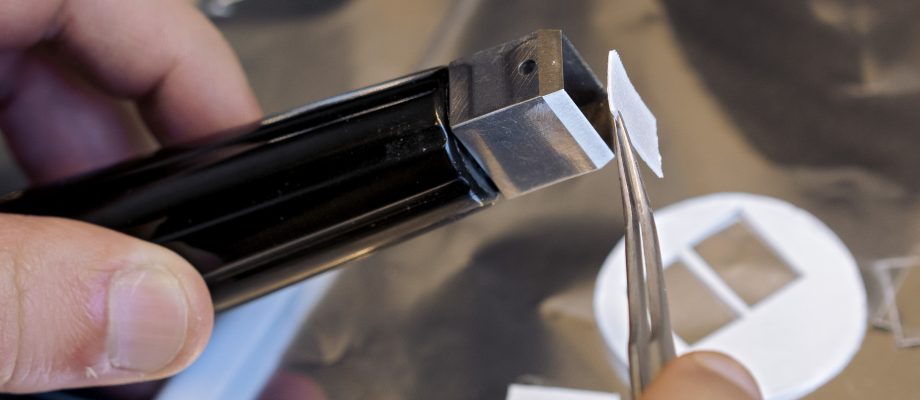RESEARCH. Stronger than steel, super light, transparent, and extremely good at conducting electricity–these are some of the properties that make graphene such an interesting material. But could it pose health risks? Occupational hygienist Håkan Tinnerberg is researching this.
Every year 30–50 people die from accidents at work in Sweden.

“This is extremely serious, of course. But there is less awareness of the fact that many more people–about 3,000 of them–die prematurely each year from work-related diseases,” explains Håkan Tinnerberg. Tinnerberg, a civil engineer and occupational hygienist at the University of Gothenburg and Sahlgrenska University Hospital, conducts research on exposure to hazardous particles in the air.
His projects include soot exposure, measuring elemental carbon and soot particles in diesel exhaust, and the isocyanic acid found in cigarette smoke.
In collaboration with SIO Graphene, the strategic innovation program, he also conducts research on the risks of the new and exciting material graphene. Graphene has no thickness because it consists of a single layer of carbon atoms, arranged in a chicken wire pattern. That is why it is called two-dimensional, Håkan Tinnerberg explains.
“Graphene has many applications. Since it conducts electricity, graphene can be inserted into smart textiles that non-intrusively monitor patients. It can be used in paper to seal out moisture and in batteries and capacitors. It can also be added to adhesives and make car tires more durable.”
Developing survey methods
Håkan Tinnerberg investigates the inhalation of particles of graphene.
“I measure the presence of nanoparticles in the air and try to develop better methods to do this kind of research. We can also measure early effects on respiratory passages, and then assess whether there may be a link between exposure and respiratory disease. Common occupational diseases include asthma and chronic obstructive pulmonary disease (COPD). Graphene in powder form poses greater risk of airborne exposure than when it is contained in solutions. But since graphene can come in many different forms, we need to use several different methods to investigate whether exposure is occurring.”

Tinnerberg uses several different instruments to investigate air quality, including an aethelometer that measures black carbon particles, nanoparticle counters that measure the location of nanoparticles, and an Organic Carbon/Elemental Carbon (OCEC) analyzer that measures elemental carbon. Graphene is pure elemental carbon.
“Exposure to graphene can occur more often in industry than in closed lab environments, which is the case of the Swedish graphene industry today. Graphene is moving out of lab environments and into pilot plants that handle much larger volumes. Helping small start-ups handle it correctly from the start, as they move from lab to industrial manufacturing, is the key to minimizing exposure. Together with SIO Graphene, we have conducted measurements in three companies and have clearly identified exposure to graphene. But to understand whether the exposure is dangerous, we need more research.”
Tinnerberg believes that much more attention should be paid to work-related diseases.
“Illness and death often occur long after a person has been in an unhealthy workplace, which of course attracts less attention than, say, a fatal accident. But protecting people from become sick at work should be an obvious priority in working life, regardless of when the illness occurs.”
BY: EVA LUNDGREN/GU JOURNAL
PHOTO: JOHAN WINGBORG











